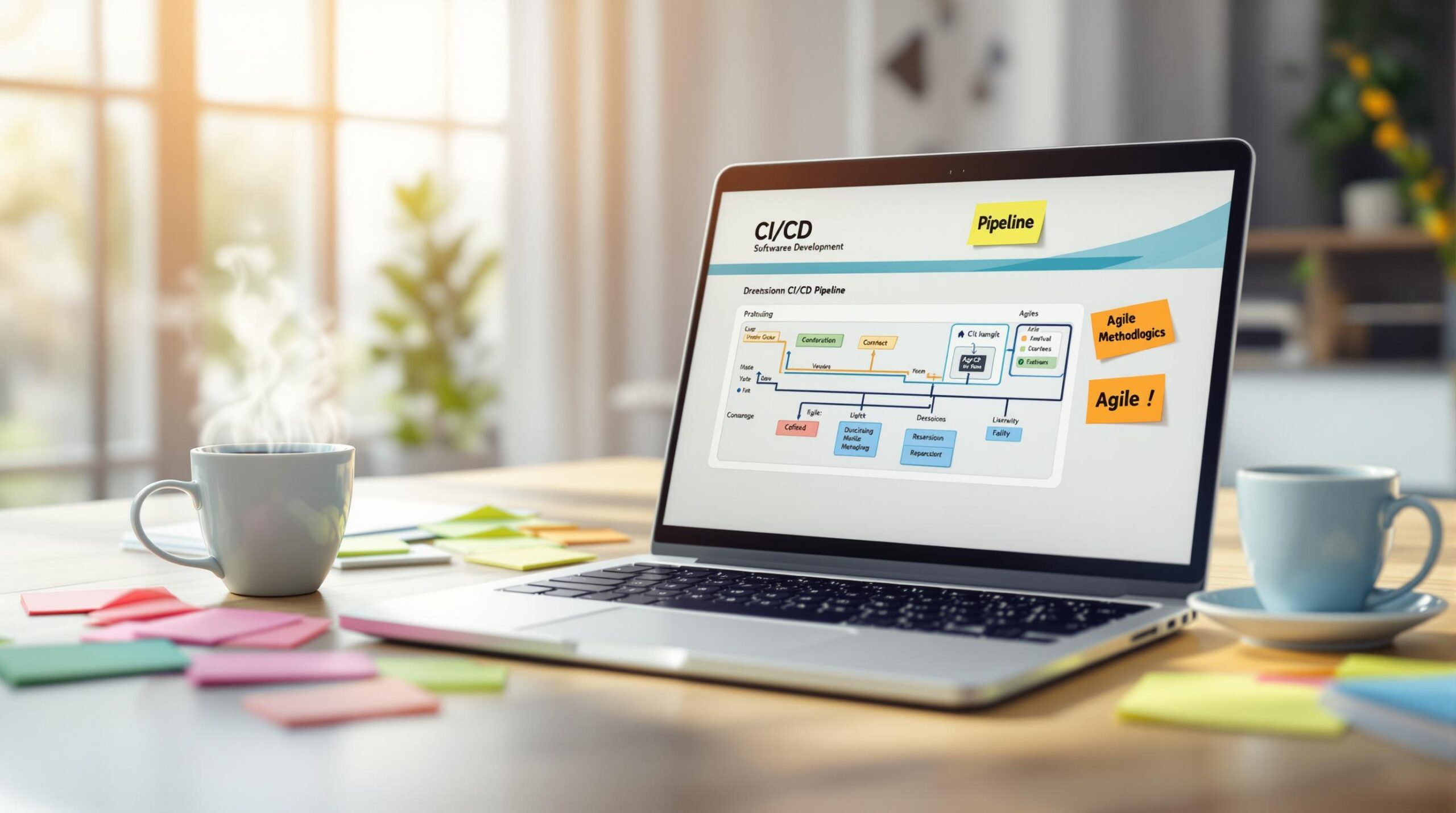Coding interviews at companies like Google, Amazon, and Meta are tough. They test not just your coding skills but also your problem-solving approach, communication, and thought organization. This guide breaks down everything you need to prepare effectively:
- Master the Basics: Learn key data structures (arrays, trees, graphs) and algorithms (sorting, searching, dynamic programming).
- Practice Smart: Use platforms like LeetCode and HackerRank; aim for 150+ solved problems to boost your chances.
- Problem-Solving Steps: Understand, plan, implement, test, and optimize your solutions.
- Mock Interviews: Simulate real interviews on platforms like interviewing.io to refine your skills.
- Behavioral Prep: Use the STAR method to structure your answers for non-technical questions.
- System Design: Focus on simple architectures like chat apps or URL shorteners for entry-level roles.
Quick Prep Plan:
| Focus Area | Time Allocation | Key Tools/Resources |
|---|---|---|
| Technical Skills | 50-60% | LeetCode, HackerRank, CodeForces |
| System Design Basics | 20-25% | Mock interviews, simple systems |
| Behavioral Questions | 15-20% | STAR method, project examples |
Pro Tip: Dedicate 3-6 months with 2-3 hours daily for consistent practice. Mock interviews (15-20 sessions) can significantly improve your confidence and performance.
Ready to ace your interview? Let’s dive in.
Learning the Basics of Coding
Important Data Structures and Algorithms
Focus on these essential structures: arrays, linked lists, trees, graphs, and stacks/queues. These are the building blocks for many coding challenges you’ll face, especially in Section 5.
| Data Structure | Key Concepts |
|---|---|
| Arrays & Strings | Traversal, manipulation |
| Trees & Graphs | Traversal methods, balancing |
| Stacks & Queues | LIFO/FIFO operations |
| Hash Tables | Managing collisions |
For algorithms, prioritize sorting methods like quicksort and mergesort, searching techniques such as binary search, and dynamic programming. These are commonly tested and often provide efficient solutions.
Understanding these basics lays the groundwork for learning systematic problem-solving, which will be explored in Section 3.
Resources for Learning
Pair foundational resources with practical exercises to reinforce your knowledge.
Recommended tools include:
- Books: Cracking the Coding Interview is a go-to resource for interview prep.
- Online Platforms: Practice coding problems on LeetCode, HackerRank, and CodeForces.
- Structured Courses: Follow guided learning paths for a more organized approach.
Tips for Improving Basics
Use visualization to simplify complex ideas. For example, sketch data structures to better understand their behavior and operations.
When working on algorithms, start by writing pseudocode, test with straightforward examples, and assess time/space complexity before diving into actual coding.
Practice basic operations manually first, then apply these skills consistently through platforms like LeetCode to follow the practice schedule outlined in Section 4.
Solving Problems Systematically
Steps for Solving Coding Problems
Taking a structured approach to coding problems can make all the difference during interviews. Start by fully understanding the problem before jumping into coding. Carefully review the input constraints, expected outputs, and edge cases.
Break the problem into smaller, manageable parts. For example, if you’re working on a graph traversal problem, first identify the graph’s structure. Next, decide whether to use DFS or BFS, and then proceed with coding your solution.
Here are the key phases of problem-solving:
- Understanding: Clarify the requirements and constraints.
- Planning: Outline the steps for your solution.
- Implementation: Write your code while accounting for edge cases.
- Testing: Use diverse inputs to validate your solution on platforms like LeetCode (see Section 4).
Improving Solutions and Complexity Analysis
Once you have a working solution, focus on refining it. Look for ways to optimize time and space efficiency by applying your knowledge of data structures (refer to Section 2).
"The key to acing coding interviews is not just about solving problems but also about explaining your thought process clearly." – Andrei Neagoie, Instructor, Master the Coding Interview: Data Structures + Algorithms [4]
When analyzing complexity, keep these factors in mind:
- Time complexity: How the runtime changes as the input size grows.
- Space complexity: How much memory your solution requires.
- Trade-offs: Weigh the balance between time and space efficiency.
Communicating Clearly
Strong communication skills set top candidates apart. While solving problems, clearly explain your reasoning. Highlight the key decisions and trade-offs you made along the way.
Showcase your thought process by:
- Clarifying assumptions: Confirm your understanding of the problem before starting.
- Explaining your strategy: Share a high-level overview of your approach.
- Discussing alternatives: Compare different solutions and their pros and cons.
- Walking through your code: Clearly describe how your implementation works.
Practicing these steps consistently will enhance your preparation and tie into the strategies discussed in ‘Practicing Regularly.’ These communication techniques will also help you excel in mock interviews and behavioral or system design discussions (see Section 7).
Practicing Regularly
Best Platforms for Practice
To excel in interviews, practicing consistently on the right platforms is key. LeetCode is great for interview-focused problems, HackerRank strengthens foundational skills, and KodNest provides step-by-step explanations. These platforms align well with the structured learning paths mentioned earlier in Section 2.
Setting Up a Practice Schedule
A steady practice routine can make a big difference. Based on the 3-6 month timeline introduced in Section 1, spending 2-3 hours daily is ideal. Here’s a suggested structure:
Morning Sessions (1 hour)
- Focus on reviewing concepts and solving easier problems to build confidence.
Evening Sessions (1-2 hours)
- Work on medium to hard challenges under timed conditions to simulate real pressure.
- Spend time reviewing and optimizing your solutions for better efficiency.
This schedule ties in with the problem-solving strategies discussed in Section 3.
Simulating Real Interviews
Mock interviews are a great way to test your readiness. Platforms like interviewing.io provide realistic practice sessions with feedback from experienced engineers. These sessions are a practical way to refine both your technical skills and communication, as highlighted in Section 3’s ‘Communicating Clearly’ guide.
For effective mock interviews:
- Stick to 45-minute timed sessions to mimic actual interview conditions.
- Practice explaining your thought process out loud while coding.
- Aim for at least one mock interview per week to track progress and address gaps.
sbb-itb-f454395
Recognizing Common Interview Patterns
Types of Coding Questions
Technical interviews at leading tech companies often revolve around a few core algorithmic patterns:
- Dynamic Programming: Break down problems into smaller subproblems and solve them using principles like optimal substructure (see Section 2 for more details).
- Recursion and Backtracking: Tackle problems step by step, exploring different possibilities to find a solution.
- Sliding Window: Work with arrays or strings to efficiently handle operations that involve fixed-size or overlapping segments.
Identifying Patterns
Recognizing these patterns is a game-changer. Instead of viewing coding challenges as isolated problems, you can approach them as variations of familiar templates. This skill builds on the structured problem-solving methods discussed in Section 3 and is essential for handling interview questions efficiently.
| Problem Analysis Step | Key Focus Areas | Common Clues |
|---|---|---|
| Input Analysis | Arrays or strings | Look for fixed-size windows or overlapping sections |
| Problem Requirements | Optimization tasks | Words like "maximum", "minimum", or "shortest" in the problem |
| Constraints | Time/space efficiency | Input size limits or performance expectations |
Learning Resources for Patterns
Platforms like LeetCode (with its pattern tags) and KodNest (structured learning paths) are excellent for honing specific techniques. These resources work well alongside the general practice tools mentioned in Section 4.
To practice effectively:
- Begin with straightforward examples for each pattern.
- Move on to intermediate-level problems to deepen your understanding.
- Test your skills by solving complex problems that combine multiple patterns.
Dedicate focused practice sessions to each type of pattern. This deliberate, step-by-step approach helps sharpen your ability to quickly recognize and apply patterns during interviews.
Preparing for Behavioral and System Design
Answering Behavioral Questions
Nailing behavioral questions is a key part of landing a job at leading tech companies. The STAR method – which stands for Situation, Task, Action, Result – offers a clear way to organize your answers and highlight your experiences.
| STAR Component | What to Focus On | Example |
|---|---|---|
| Situation | Set the stage | Describe the project or challenge briefly |
| Task | Your role | Explain your specific responsibilities and goals |
| Action | What you did | Detail the steps you took and your approach |
| Result | Outcome | Share measurable results and what you learned |
When crafting your answers, draw from academic projects, internships, or personal coding projects. These examples help you demonstrate the communication and problem-solving skills that complement the technical strategies discussed earlier.
Basics of System Design
For entry-level roles, system design interviews typically cover basic architectural ideas rather than intricate technical details. Start by practicing with simple systems like a URL shortener or a basic chat app. The goal is to show clear thinking and a grasp of key concepts.
Key areas to focus on include:
- Defining requirements: Clearly outline the system’s functional needs.
- Breaking it down: Identify the main components of the system.
- Scalability: Explain how the system can handle future growth.
- Data flow: Map out how information moves through the system.
This structured approach ties back to the problem-solving methods discussed in earlier sections, helping you stay organized and logical.
Using Mock Interviews and Feedback
Mock interviews are an excellent way to sharpen both your behavioral and system design skills.
Here’s how to make the most of them:
- Record your sessions to review how you communicate.
- Seek specific feedback on technical details and clarity.
- Identify weak spots and work on them systematically.
Conclusion: Ready for Success
Key Preparation Steps
To wrap up your interview prep, focus on these main areas:
- Technical Skills: Hone your understanding of data structures and problem-solving techniques (50-60% of your preparation).
- System Design: Review basics like architecture and scalability (20-25% of your focus).
- Behavioral Prep: Use the STAR method and prepare strong project examples (15-20% of your time).
As highlighted in Section 7, completing 15-20 mock interviews can make a noticeable difference in your actual performance during technical interviews [1].
Encouragement for Interview Day
Even top engineers at companies like Google and Amazon often go through several interviews before securing their roles. The key is to maintain a growth mindset and treat every interview as a chance to improve [3].
Here’s how to apply what you’ve learned from this guide:
- Technical Readiness: Double-check your coding environment and tools ahead of time.
- Active Communication: Talk through your thought process clearly while solving problems.
- Problem Decomposition: Use the strategies from Section 3 to break down complex problems into manageable parts.
"Preparation is a long-term process, and persistence is key to success. Even if you don’t succeed in your first few interviews, each attempt sharpens your skills." [1]
The best candidates approach interviews with a mix of confidence and humility, demonstrating strong problem-solving abilities and a willingness to learn.
FAQs
Is 3 months enough for a coding interview?
Yes, three months can work for coding interview prep if you follow a structured plan. This timeframe fits the 3-6 month preparation window outlined earlier in the guide.
Month 1: Build Your Foundation
- Focus on core data structures and algorithms.
- Study resources like Grokking Data Structures & Algorithms for Coding Interviews [2].
- Begin solving easier problems from LeetCode’s ‘Top Interview Questions’ list.
Months 2-3: Practice and Simulate
- Tackle 2-3 medium-level problems daily on platforms like LeetCode or HackerRank.
- Participate in 15-20 mock interviews using tools like interviewing.io [1].
- Prioritize timed practice sessions to simulate real interview conditions.
The key is consistent, focused practice. This plan blends foundational learning with targeted practice techniques covered in earlier sections of the guide.





